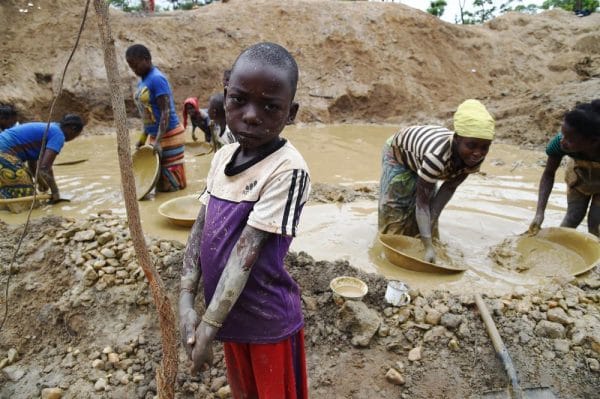1. Industry associations tell us that Singapore needs cheap labour.
2. The pandemic has caused the cost of labour to increase. (Because housing migrant workers as before poses significant risks to public health and national security, at least for the foreseeable future.
3. The government seems unwilling to accommodate the increased spending on its end.
4. Singaporeans will accept neither increased costs for goods & services, nor higher taxes, nor an increase in the number of foreigners.
How can we continue to enjoy the benefits of cheap labour, without incurring additional risks? How can we foster economic growth in face of such challenges? Such a debate has caused much bitterness on all sides. Luckily, I may have a solution, which I humbly offer here for public consideration. Let Singapore solve its perennial labour woes by legalising child labour from ages four and upwards.
Consider it. The value of child labour is indisputable. In countries with more liberal labour policies, they engage in all sorts of productive economic activity, from the manufacturing of clothing, to the mining of raw materials, to the recycling of used electronics. Many are also usefully employed in the service/tertiary industries. Food vendors and small businesses employ a great number of children to hawk their wares, while K-pop stars often sign contracts before puberty, some as young as 12.

So why do we not allow children to be gainfully employed outside the home in shipyards and factories? I blame our restrictive labour laws, which forbid many forms of useful employment for those below the arbitrary ‘legal working age’. Children above 13 can be employed, but only in non-industrial settings and for a very meagre number of hours per day. You cannot, for example, hire a 9 year-old child to do basic construction work, nor can you make them cut grass or drive heavy vehicles–even though that’s the age when they are the most pliable and most effective. Even tech companies like Linkedin are complicit in restricting access to employment for children. The minimum age to create a Linkedin account is 16.

The possibilities are limited only by our imagination. Shipping, microprocessors, construction, the SAF, oil & gas, financial services, hospitality, and even the media could all benefit from such a policy. I cannot speak definitely for other industries, but Singapore’s Media & PR industry would greatly benefit from such deregulation. Surely it does not take an undergraduate to write an angsty Rice Media word salad, nor to copy-paste from r/Singapore, nor to make a list of 10 Best Bubble Tea Shops, nor to blindly sing the PAP’s praises, nor to repost the same attacks on Chee Soon Juan or Kirsten Han that we’ve been reposting since at least 1992. Such ‘journalism’ could just as easily be outsourced to children of 9 or 10. Those in the industry who suggest otherwise are charlatans seeking to protect their own rice bowl at the taxpayer’s expense.

Such concerns are valid, but they are—in my opinion—too pessimistic. In fact, child labour is the answer to Singapore’s low fertility.
One of the most frequently cited obstacles to starting a family is cost. Even though our government subsidises it through tax relief and cash bonuses, everyone knows that children are a time-consuming, loss-making venture. How then do we reconcile this apparent contradiction? Why is there such a dismal supply of children if they are as productive as I claim?

However, if we deregulate the labour market as we have done for telecommunications and allow our children to be leased out on 5 or 10 year contracts to employers, then their market value will appreciate astronomically. Parents would then be incentivised to produce more children to lease on the market, thus increasing our population growth/labour supply. It should come as no surprise that fertility is lowest in countries like Japan or Germany, where labour laws are pedantically enforced. Countries where child labour is booming rarely suffer such fertility problems.

After all, a diversified labour pool is good for the country and a diversified portfolio is good for families. Parents should have the right to choose whether to send their children to school, or to the semiconductor industry, or both. Smarter children can be educated to become Ministers as a long-term, high-profit investment, while those with less potential can start work as soon as they are old enough to use their opposable thumbs.

Surely the question is not whether an 80 year-old uncle should be collecting cardboard, but how to make card-board collecting more efficient. (Perhaps some venture capital firm can create a ‘CardboardTogether’ app which matches Singaporeans in need of trash disposal with elderly collectors—for a reasonable transaction fee.)
Ultimately, this problem occurs because our society has ‘values’; Values like; “all children have a right to education”, “respect for our elders”, “a basic right to safe living conditions”. Over time, these values–often arbitrary–coalesce into a system of ethics which serve to guide our thinking on policy and law. Now, there is nothing inherently wrong with these values, but they become problems when they interfere with the effective functioning of our free market; when these so-called values cause distortions and inefficiency. When this happens, we must act quickly to expunge them before they erode our global competitiveness, reduce wealth creation and ultimately hurt the very people they seek to protect. After all, the road to hell is paved with good intentions, and sometimes the only way to help the powerless, the elderly, or the young is to exploit them more efficiently.
2. The population for various age groups of children refers to the citizen population. The total number of children available for employment is likely higher and closer to 400,000. There is no reason why child labour should be a protected privilege of Singaporean families.
3. As British Historian Eric Hobsbawm writes on Britain’s industrial output in ‘The Age Of Revolution’: In 1848, Britain’s trade was twice that of its nearest competitor, France, where in 1780, it merely exceeded it by a small margin … It produced half of the developed world’s supply of pig iron and used twice as much per inhabitant as the next most industrialised economy, Belgium.
4. Do the laws of supply and demand apply to procreation? I strongly believe it does. To quote the Libertarian philosopher Teo You Yenn’s 2011 book Neoliberal Morality: “As a small city-state highly-dependent on global capital, the logic of low taxation (particularly corporate taxes), and the corporatization of national industries has been embraced as a sort of survivalist common sense.” It naturally follows that reproduction can be stimulated using the very same logic.
5. To prevent abuse, CardboardTogether can be run as a social enterprise.






